As the mercury rose in the last week, so did average growth rates as a yearly high of 78kg DM/ha/day was recorded across our drystock measuring farms north and south. What does a figure of 78kg mean? Put simply, it is taking three days to grow 1cm of grass at the moment. This figure is only going to rise with the good growing conditions forecast.
An optimum average farm cover this week would be between 500 and 600kg DM/ha. This is on a farm stocked at 2.5LU/ha – well ahead of the typical average stocking rate. In reality, stocking rates are lower and farm covers are much higher on most farms.
We are seeing a lot of covers in excess of 1,700kg DM/ha being logged into the Teagasc Pasturebase system. These are ahead of what we want to be grazing. At this level, the grass plant has grown to a point that it needs to produce a strong stem to hold it upright and towards the sun in order to keep attaining enough light. So its growth pattern changes from leaf towards stem, the latter being much less digestible to the animal. We are filling them up with material of a poorer feed value.
These covers should be removed along with first-cut silage in the coming days and weeks. Many are sticking to the calendar with regards to their first cut – waiting based on their fertiliser dates and the recommended two units daily nitrogen absorption rate. This may not be necessary – check the bulk of your silage fields and take a sample for sugars. If sugar concentration is between 3-4%, a 24-hour wilt will set us up for optimum preservation. Above this and we can get away with a shorter wilt.
Reports in the last week suggest that a portion of the initial samples sent to advisers and consultants around the country are coming in quite low in sugar concentration and high in nitrates. Thus, it is important to take a test if in doubt.
Given the depleted silage stocks around the country, once we hit our targets in terms of bulk for first-cut, remove it, fertilise hard and look towards second-cut. Aiming for excessive bulk will have big negative effects on our feeding value.
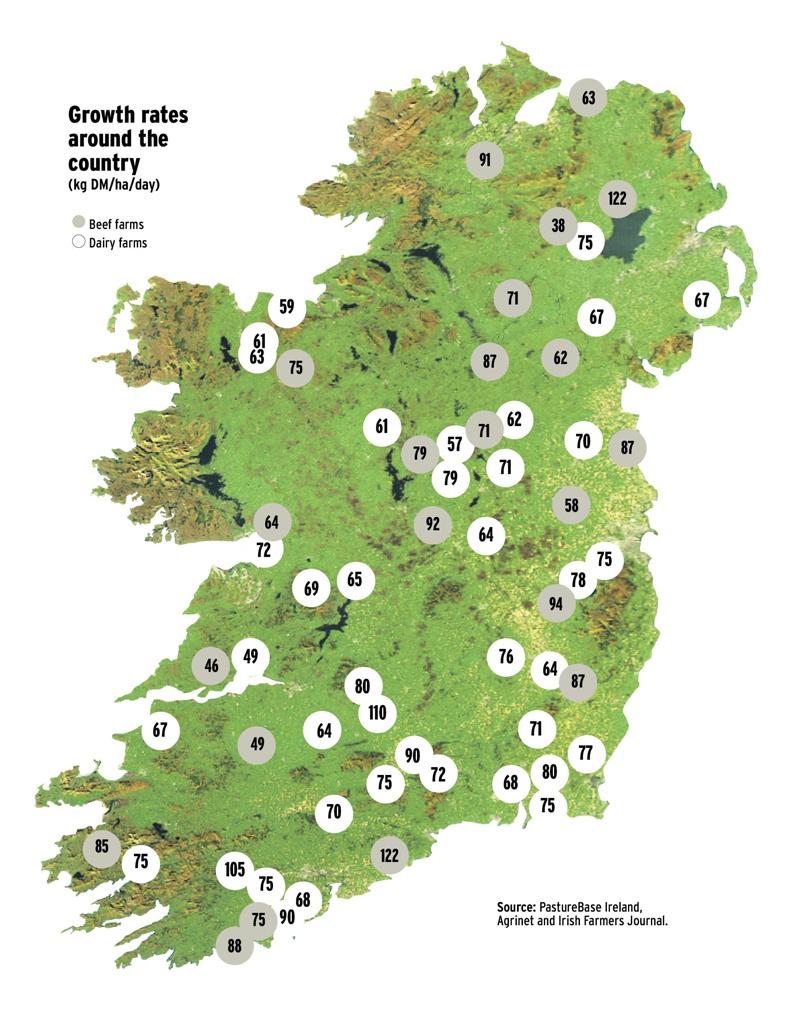

Co Waterford
System suckler to bull beef
Soil type variable
Avg farm cover (kg DM/ha) 325
Grass demand (kg DM/ha/day) 33
Growth (kg DM/ha/day) 122
Growth has thankfully picked up this week and it should continue to push on with the warm weather forecast. Ground has dried up and stock have settled very well. I am restricting dry cows which are due to start calving from the second week of July. They are cleaning out paddocks behind my autumn-born bulls and a group of heifers, which I hope to slaughter off grass from the end of July. In the next few weeks, those cows will get an IBR vaccine and a mineral bolus.
Once paddocks are grazed out I am following them with two bags of 18-6-12 to keep grass moving and if the opportunity arrives I will take out surplus bales where possible as I aim to build my silage reserves again.
I have a group of bulls which I am finishing and they are doing very well. They are currently on 12kg of a barley mix. Silage ground has started to grow well the last few weeks. I am aiming to cut mine in the first week of June.

Co Fermanagh
System suckler to bull beef
Soil type mostly heavy
Avg farm cover (kg DM/ha) 665
Grass demand (kg DM/ha/day) 53
Growth (kg DM/ha/day) 71
Utilisation has been a bit of a problem this week. We had to move cattle on early last Monday with the weather. They were doing too much damage. We are currently stocked at 2.3LU/ha. Some dry cows remain indoors waiting for ground conditions to dry up before they are released to grass. We took out paddocks last Saturday and there are more paddocks to be taken out this week. Weather conditions prevented us from taking the rest of the planned surplus paddocks last weekend. I took my first cut of silage last Friday and put it into the pit along with the paddocks that were taken out. These were meadows that were only set five weeks ago but I felt they were strong enough to cut. The grass was tested and the nitrogen had gone out of it. I’m happy with the quality of the crop I got. I will try to aim for three cuts from my silage ground this year if conditions allow, and my aim is always quality over quantity.

Co Clare
System suckler to bull beef
Soil type mostly heavy
Avg farm cover (kg DM/ha) 543
Grass demand (kg DM/ha/day) 39
Growth (kg DM/ha/day) 46
It rained heavily in Clare on Sunday night and Monday morning and as a result some paddocks were slightly damaged. The warm weather that we’re now getting should lead to good grass growth and I’ve decided to take out two paddocks on the home block that have gone too strong. I’ve got 20 autumn-born bulls grazing around the yard this year and I want them going into lush green covers.
In terms of weight, they are slightly behind last year’s bulls, but if I push them really hard at grass they should catch up with a bit of sun on their backs over the next few weeks.
Breeding has been going well on the outfarm and calves are thriving. I’ve a lot of Limousin calves on the ground this year so it’ll be interesting to see how they perform in the finishing pen next year.
I’ve 90 units spread on grazing ground to date and grass is finally beginning to move. First-cut silage will be gathered before the rain promised on Sunday.

Co Cork
System Suckler/calf to beef
Soil type Relatively dry
Avg farm cover (kg DM/ha) 1,125
Grass demand (kg DM/ha/day 38
Growth (kg DM/ha) 88
The grass has burst out of the ground with the extra sunshine and the rise in soil temperatures. All stock is now out, as the last of the bulls went to grass last Thursday, with just the finishing bulls in the shed now. This week, grass growth has doubled on my farm to 88kg DM/ha. This was gladly welcomed as I plan to take out as many paddocks as I can for silage when fields go strong. There is 3ac of grass with a cover of 1,800kg DM/ha. I plan to take these fields out in the next few days. I will mow the silage in the afternoon when sugar levels are at their highest, ted it out straight after mowing, ted it a second time allowing the grass plenty of time to wilt, rake it into swards, and bale it. Once the silage ground is cut, I will put out about 3,000gals/ac of slurry. I am spreading fertiliser at a rate of one bag/ac of CAN on grazing ground every three weeks to drive growth. I have extended the breeding season by two weeks due to the bad spring, and am taking bull away from the cows next Thursday.
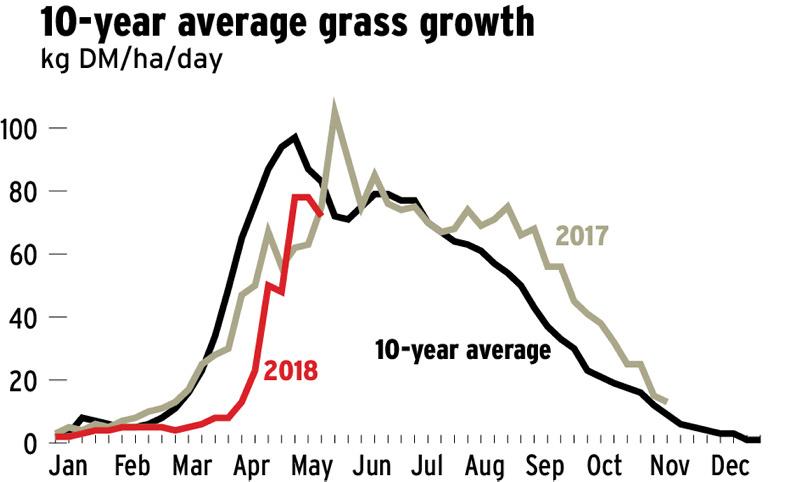
Read moreGrass+: pre-grazing yields getting high
As the mercury rose in the last week, so did average growth rates as a yearly high of 78kg DM/ha/day was recorded across our drystock measuring farms north and south. What does a figure of 78kg mean? Put simply, it is taking three days to grow 1cm of grass at the moment. This figure is only going to rise with the good growing conditions forecast.
An optimum average farm cover this week would be between 500 and 600kg DM/ha. This is on a farm stocked at 2.5LU/ha – well ahead of the typical average stocking rate. In reality, stocking rates are lower and farm covers are much higher on most farms.
We are seeing a lot of covers in excess of 1,700kg DM/ha being logged into the Teagasc Pasturebase system. These are ahead of what we want to be grazing. At this level, the grass plant has grown to a point that it needs to produce a strong stem to hold it upright and towards the sun in order to keep attaining enough light. So its growth pattern changes from leaf towards stem, the latter being much less digestible to the animal. We are filling them up with material of a poorer feed value.
These covers should be removed along with first-cut silage in the coming days and weeks. Many are sticking to the calendar with regards to their first cut – waiting based on their fertiliser dates and the recommended two units daily nitrogen absorption rate. This may not be necessary – check the bulk of your silage fields and take a sample for sugars. If sugar concentration is between 3-4%, a 24-hour wilt will set us up for optimum preservation. Above this and we can get away with a shorter wilt.
Reports in the last week suggest that a portion of the initial samples sent to advisers and consultants around the country are coming in quite low in sugar concentration and high in nitrates. Thus, it is important to take a test if in doubt.
Given the depleted silage stocks around the country, once we hit our targets in terms of bulk for first-cut, remove it, fertilise hard and look towards second-cut. Aiming for excessive bulk will have big negative effects on our feeding value.


Co Waterford
System suckler to bull beef
Soil type variable
Avg farm cover (kg DM/ha) 325
Grass demand (kg DM/ha/day) 33
Growth (kg DM/ha/day) 122
Growth has thankfully picked up this week and it should continue to push on with the warm weather forecast. Ground has dried up and stock have settled very well. I am restricting dry cows which are due to start calving from the second week of July. They are cleaning out paddocks behind my autumn-born bulls and a group of heifers, which I hope to slaughter off grass from the end of July. In the next few weeks, those cows will get an IBR vaccine and a mineral bolus.
Once paddocks are grazed out I am following them with two bags of 18-6-12 to keep grass moving and if the opportunity arrives I will take out surplus bales where possible as I aim to build my silage reserves again.
I have a group of bulls which I am finishing and they are doing very well. They are currently on 12kg of a barley mix. Silage ground has started to grow well the last few weeks. I am aiming to cut mine in the first week of June.

Co Fermanagh
System suckler to bull beef
Soil type mostly heavy
Avg farm cover (kg DM/ha) 665
Grass demand (kg DM/ha/day) 53
Growth (kg DM/ha/day) 71
Utilisation has been a bit of a problem this week. We had to move cattle on early last Monday with the weather. They were doing too much damage. We are currently stocked at 2.3LU/ha. Some dry cows remain indoors waiting for ground conditions to dry up before they are released to grass. We took out paddocks last Saturday and there are more paddocks to be taken out this week. Weather conditions prevented us from taking the rest of the planned surplus paddocks last weekend. I took my first cut of silage last Friday and put it into the pit along with the paddocks that were taken out. These were meadows that were only set five weeks ago but I felt they were strong enough to cut. The grass was tested and the nitrogen had gone out of it. I’m happy with the quality of the crop I got. I will try to aim for three cuts from my silage ground this year if conditions allow, and my aim is always quality over quantity.

Co Clare
System suckler to bull beef
Soil type mostly heavy
Avg farm cover (kg DM/ha) 543
Grass demand (kg DM/ha/day) 39
Growth (kg DM/ha/day) 46
It rained heavily in Clare on Sunday night and Monday morning and as a result some paddocks were slightly damaged. The warm weather that we’re now getting should lead to good grass growth and I’ve decided to take out two paddocks on the home block that have gone too strong. I’ve got 20 autumn-born bulls grazing around the yard this year and I want them going into lush green covers.
In terms of weight, they are slightly behind last year’s bulls, but if I push them really hard at grass they should catch up with a bit of sun on their backs over the next few weeks.
Breeding has been going well on the outfarm and calves are thriving. I’ve a lot of Limousin calves on the ground this year so it’ll be interesting to see how they perform in the finishing pen next year.
I’ve 90 units spread on grazing ground to date and grass is finally beginning to move. First-cut silage will be gathered before the rain promised on Sunday.

Co Cork
System Suckler/calf to beef
Soil type Relatively dry
Avg farm cover (kg DM/ha) 1,125
Grass demand (kg DM/ha/day 38
Growth (kg DM/ha) 88
The grass has burst out of the ground with the extra sunshine and the rise in soil temperatures. All stock is now out, as the last of the bulls went to grass last Thursday, with just the finishing bulls in the shed now. This week, grass growth has doubled on my farm to 88kg DM/ha. This was gladly welcomed as I plan to take out as many paddocks as I can for silage when fields go strong. There is 3ac of grass with a cover of 1,800kg DM/ha. I plan to take these fields out in the next few days. I will mow the silage in the afternoon when sugar levels are at their highest, ted it out straight after mowing, ted it a second time allowing the grass plenty of time to wilt, rake it into swards, and bale it. Once the silage ground is cut, I will put out about 3,000gals/ac of slurry. I am spreading fertiliser at a rate of one bag/ac of CAN on grazing ground every three weeks to drive growth. I have extended the breeding season by two weeks due to the bad spring, and am taking bull away from the cows next Thursday.

Read moreGrass+: pre-grazing yields getting high

















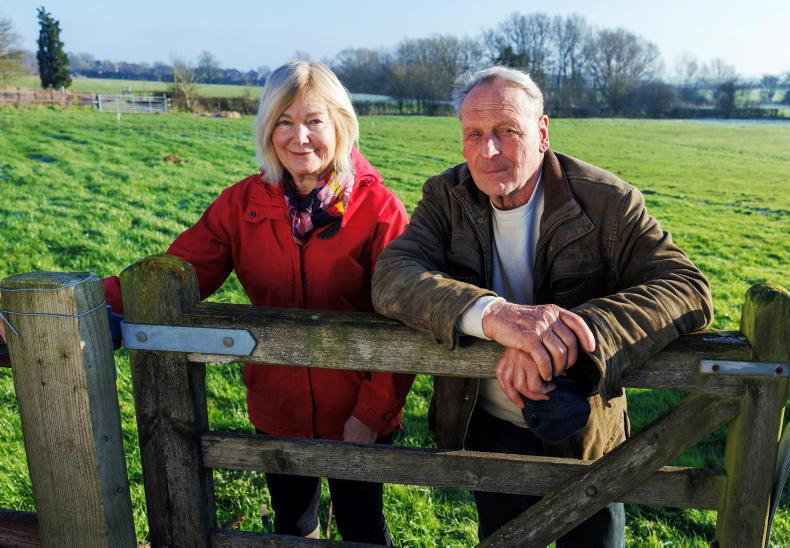


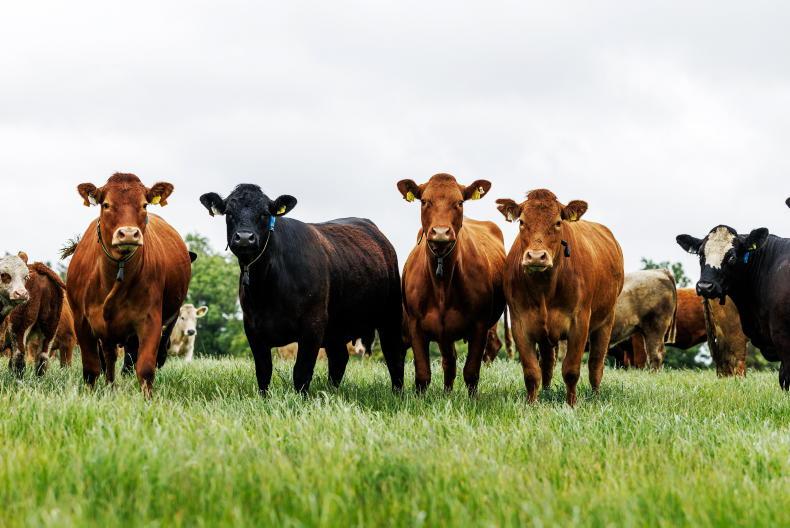
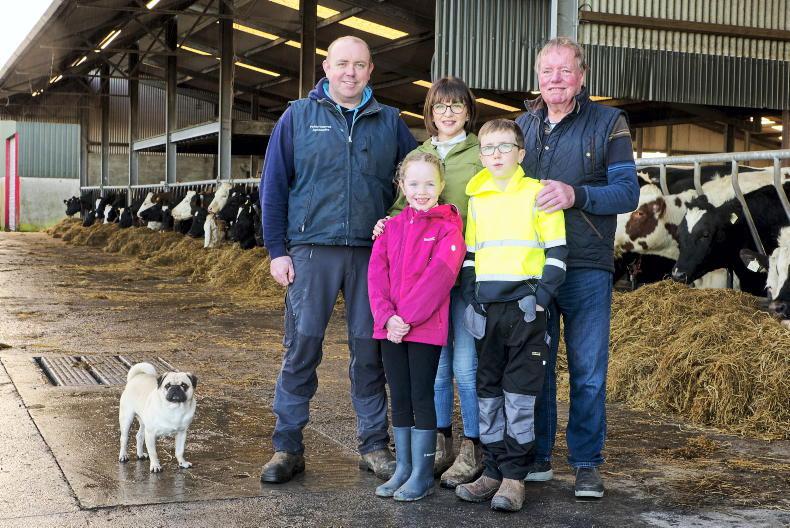
SHARING OPTIONS